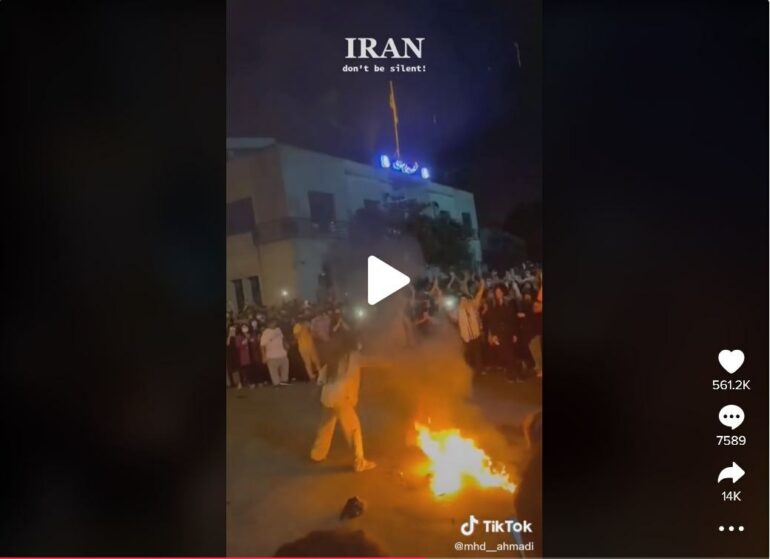Images of the protests that followed the death of 22-year-old Mahsa Zhina Amini on Sept. 16, 2022, in Iran and reports of the government’s brutal crackdown have circulated widely on social media. This flow of information comes despite efforts by the Iranian regime to throttle internet access and censor information leaving the country.
One effective method the protesters have hit on has been to use TikTok, the video-sharing app better known for young people posting clips of themselves singing and dancing. The way video clips are shared on the social media platform and the protesters’ clever use of labeling have helped activists circumvent the information blockade of Iran’s tech-savvy security services and reach a wide audience.
As a researcher who studies young people and participatory culture – art and information produced by nonspecialists, including fan fiction and citizen journalism – I believe that TikTok is proving to be an effective tool of political activism in the face of severe repression.
Key to its effectiveness is how TikTok works. Each TikTok video recorded by the user is typically 60 seconds or shorter and loops when finished. Other users can edit or “stitch” someone else’s TikTok video into their own. Users can also create a split screen or “duet” TikTok video, with the original video on one side of the screen and their own on the other.
Stitching and duetting
To use TikTok, a protester in Iran typically uses multihop virtual private networks, meaning VPNs that send internet traffic through multiple servers, to route around government internet blackouts just long enough to post a video to TikTok. There, TikTok users who support the protester “like” the video thousands of times, stitch it into other videos, and duet it to then be liked, stitched and duetted again and again.
In the process, identifying information about the original poster is obscured. Within minutes the protester becomes anonymous even as the message spreads. Even if the video is flagged for violating TikTok’s community guidelines, its sharers like and incorporate its duets too quickly for TikTok to remove the original content from the platform completely.
In one video that has received over 620,000 views, Iranian-American attorney Elica Le Bon urges viewers to share all Iranian content to make sure the world keeps paying attention. In another, TikTok user @gal_lynette directs her 35,000 followers to instantly duet videos made by Iranian women as a form of citizen journalism to “keep their reporting – their story … alive.”
Gaming the algorithms
Elsewhere, TikTok user @m0rr1gu tells her 44,000 followers how to share that content without triggering community guidelines violations. This advice includes using “algospeak,” or code, for bypassing community guidelines violations. For TikTokkers boosting Iranian content, this means altering the word “Iran” in captions, among other tactics.
Gaming TikTok’s…
